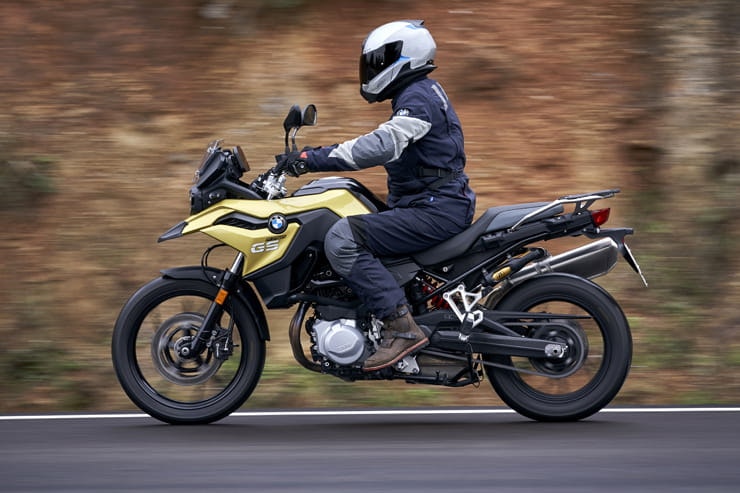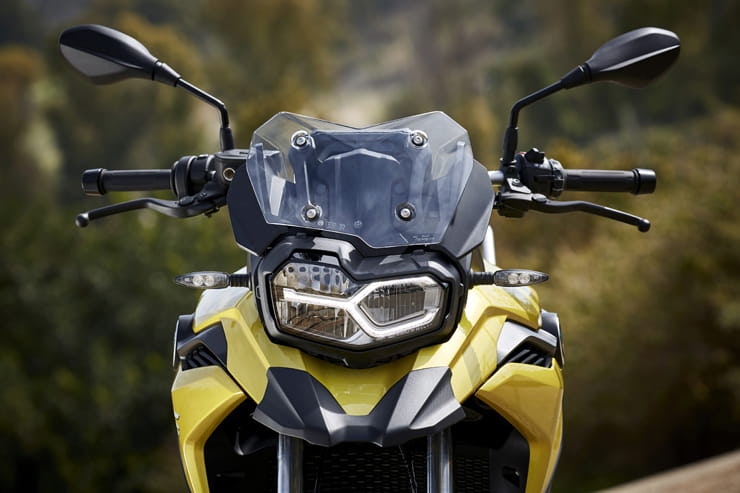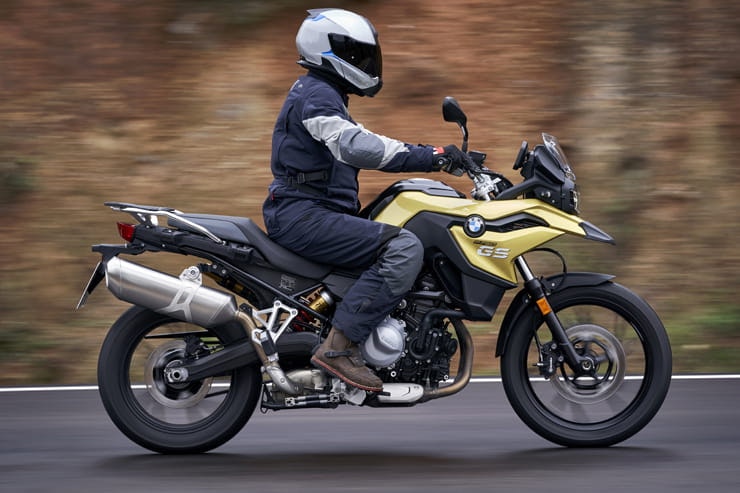BMW F750 GS (2018) | Review
By Jon Urry
Massively experienced road tester
02.03.2018
Ok, is everyone paying attention, because it is about to get confusing. BMW’s new F750GS isn’t actually a 750. Much like the way its predecessor, the F650GS, wasn’t a 650 and its updated variant the F700GS wasn’t a 700 either. Nope, the F750GS actually has a capacity of 853cc, which is identical to the F850GS. Confused? Yeah, me too, but it’s basically just a marketing decision to distinguish this bike from its GS sibling. Right, now that is covered, what have we got?
Beyond the numbers
The F750GS is essentially identical to the F850GS, but with small variations to give it more on-road focus at the expense of its off-road ability. To be brutally honest, where the F850GS is a very competent off-roader, the F750GS’s limit is basically a gravel path. This is most certainly not to its detriment, it’s just a different outlook on life. So what’s changed?
The 853cc parallel twin is physically identical to the F850GS’s motor, so you get the same extra balancer shafts, altered gearing and revised firing order. However where the F850GS makes 93.7bhp with 67.9lb.ft of torque, the F750GS makes a little more sedate 76bhp with 61.3lb.ft of torque. Unlike on some bikes this isn’t done through any cam modifications, instead it is purely a fuelling map change that limits the power output. And speaking of power output, just like the F850GS, the F750GS’s power can be restricted down to 35kW (46.6bhp), making it A2-licence compliant with its maximum torque reduced to 46.5lb.ft.
On the chassis front the F750’s frame is the same as the F850’s, however to keep costs down it runs conventional 41mm forks and to ensure a more on-road focus it has a 19-inch front wheel where the F850GS has an off-road size 21-inch item. Aside from a slightly lower seat height of 815mm, that’s about the only differences between the two models and pleasingly, you can spec the F750GS up with all the electronic bells and whistles you can get on the F850GS – so that means cornering ABS and traction control, Dynamic ESA, Gear Shift Assist, advanced rider modes etc. At a cost, naturally…
An unsung hero
I’ve always loved the more road-orientated F-series GS and the F750GS doesn’t disappoint. This unsung hero is such a beautiful and fun road bike and if I’m honest, I’d probably pick it over the F850GS if I were certain I’d never take it off the tarmac.
The 19-inch front wheel runs a wider 110/80 tyre when compared to the F850GS’s skinny 90/90 item, giving the F750GS a feeling of far more security from its front end. It’s one of those bikes that allows you to disengage your brain and just enjoy the ride rather than have to concentrate too hard, which on a bike aimed at newer riders is a good feature. And the engine alterations are pretty much unnoticeable and certainly don’t leave the F750GS feeling lacking in the power department.
Rather than anything too drastic, BMW have simply eased the F750GS’s power and torque off very marginally and up to 6000rpm there isn’t much between the two F-series models. At this point the F850GS gains a bit of a spurt on where the F750GS flat-lines, but on the road you don’t really miss this extra oomph and certainly don’t feel like the F750GS has been slapped on a leash. The two standard fitment power modes are effective with ‘rain’ muting the throttle response and ‘road’ giving it a more direct feel without getting too aggressive. And as with the F850GS, the riding position and seat are more than comfortable enough for long distance riding while the standard screen is annoying low and lacks any adjustment. That said, on the F750GS I’m more willing to forgive this annoyance as it is more of a design feature. Speaking to BMW about the low screen I was told that it is deliberately low as newer riders don’t like having their vision obstructed by a screen, which is a fair point.
Try it for size
While the F850GS with its inverted forks and off-road ability will grab the headlines, I’d urge riders to try the F750GS out for size. As a road bike it delivers a lovely balance of handling and performance and for most riders would probably be the better F-series option. I just feel a bit sad it has been saddled with some muted paint schemes that do nothing to highlight its fun side or make it stand out in the showroom.
BMW F750 GS (2018) Specification
Engine
Power: 76bhp @ 7500rpm
Torque: 61.3lb.ft @ 6000rpm
Engine type: liquid-cooled 8v parallel twin
Engine size: 853cc
Bore/stroke: 84 x 77mm
Compression ratio: 12.7:1
Fuel system: Ride by wire, fuel injection
Clutch: Multi-plate with anti-hopping
Gearbox: 6-speed
Final drive: Chain
Chassis:
Frame: Steel bridge
Swingarm: Aluminium double sided
Front suspension: 41mm inverted forks, non-adjustable
Rear suspension: Monoshock, adjustable preload and rebound (ESA option)
Front brake: 2 x 305mm discs, two-piston sliding calipers. ABS (dynamic optional)
Front tyre: 110/80 - 21
Front wheel: 2.5-inch x 19-inch
Rear brake: 265mm disc, one-piston caliper. ABS (dynamic optional)
Rear tyre: 150/70 - 17
Rear wheel: 4.25-inch x 17-inch
Seat height: 815mm (optional 770, 790, 830mm)
Rake: 27-degrees
Trail: 104.5mm
Wheelbase: 1559mm
Wet weight: 224kg
Fuel tank capacity: 15-litres
Consumption (claimed): 4.1-litres / 100km
Cost
Price: £7950 (Sport £9200)


